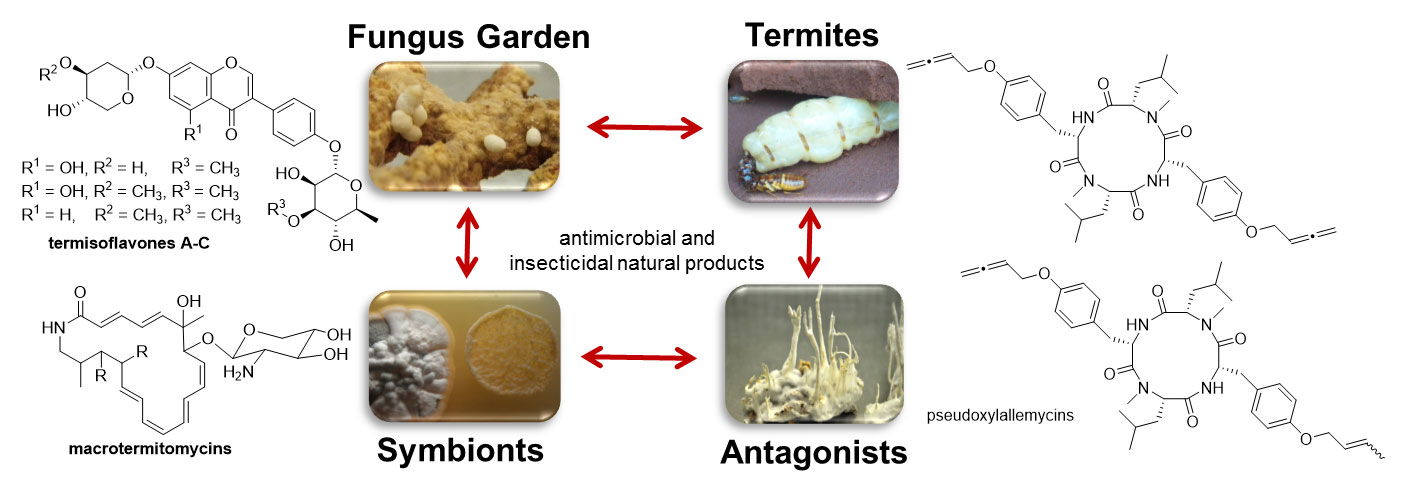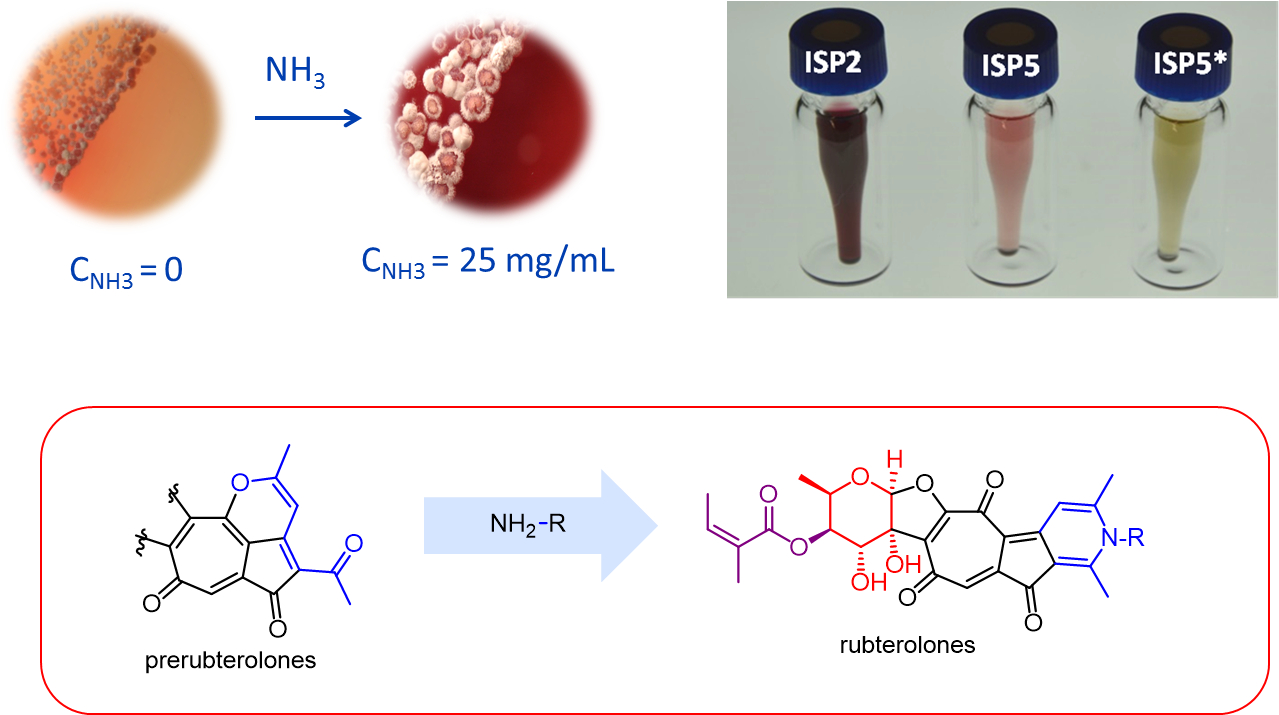Termine Fungiculture – A Hidden Treasure Trove
Natural Products from Insect-associated Microbes
Studying the microbiome of social insects, such as termites, helps to identify new aspects of small-molecule mediated symbiotic relations. At the same time it serves platform to identify new antibacterial and antifungal agents.
Fungus-growing Termites
The fungus-growing termite system is a prime example of multilateral symbiosis. The ancient farming symbiosis involves a termite host (Macrotermitinae), a specialized fungal mutualist (Termitomyces) maintained in an optimized fungal garden system (fungus comb), the presence of complex and highly adapted bacterial communities within the insect gut and fungus comb, and the co-evolved garden weed (Pseudoxylaria).
Bacterial Symbionts
A plethora of bacterial symbionts have been identified from fungus-farming termites, many of which catalyze metabolism of plant and fungal biomass (e.g., Alistipes, Bacteroidetes) or assist in the defence against antagonists (e.g., Bacillus, Firmicutes). We and others have demonstrated, e.g., the consistent presence of Actinobacteria in both termite guts and fungus combs, and the propensities for enzyme and antimicrobial production make them promising candidate plant decomposers and defensive symbionts.
Within this project, we used various different culturing techniques to isolate termite-associated microbes and sequenced the genomes of many isolates. Subsequent chemical analysis of our isolates in axenic and co-cultures revealed several new natural product classes showing a diverse set of biological activities.
Fungal Anatgonists
Capitalizing on viable fungal cultures from different termite colonies, we were able to sequence their genomes and analyze their biosynthetic capacity. Based on whole-genome comparisons, we analyzed the evolutionary history of their fungal association.
Targeted Natural Product Isolation
We use various different culturing techniques to study metabolite production of genome-sequenced isolates and microbial communities. Targeted analysis of our isolates in axenic and co-cultures revealed several new natural product classes showing a diverse set of biological activities.
Public Outreach
Wie ein Antibiotikacocktail Insekten schützt
Funding
- ChemBioSys (DFG) seit 2016
- BiBiMac (DFG-ANR) ab 2018
Collaboration
- Group of Prof. M. Poulsen (University of Copenhagen, Denmark),
- Group of Prof. K.-H. Kim (Sungkyunkwan University, Republic of Korea)
- Bio Plant Facility (HKI)
- Jena Microbial Resource Collection (HKI)





























